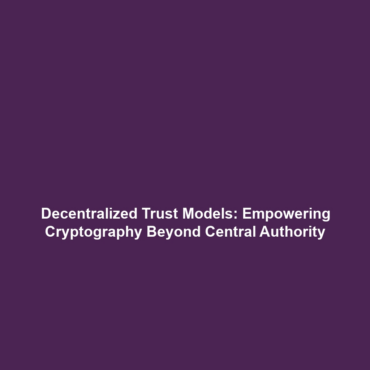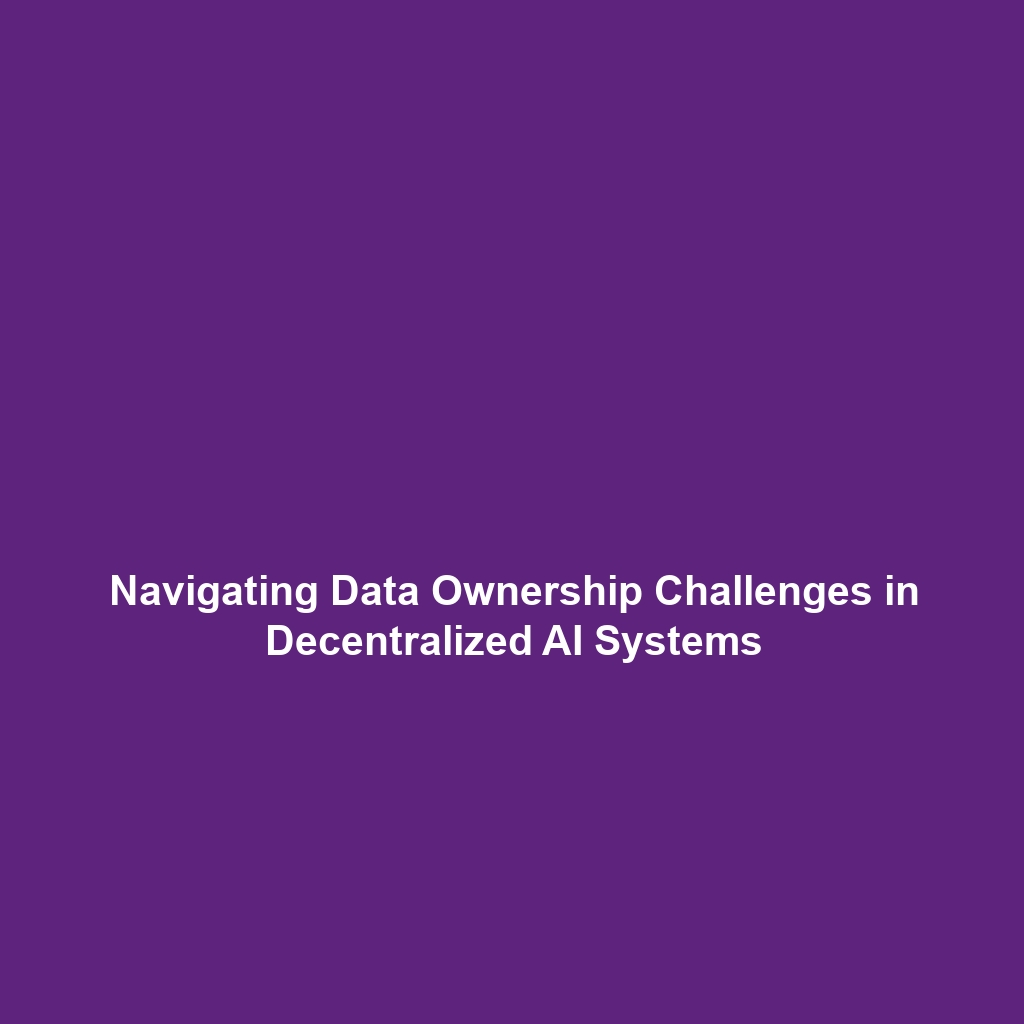<>
Trust Model Based on a Decentralized Web of Trust in Cryptography
Introduction
The trust model based on a decentralized web of trust represents a crucial paradigm shift in the field of cryptography. Unlike traditional models relying on centralized authorities, this decentralized approach empowers individuals by enabling them to independently establish trust through peer-to-peer relationships. This model enhances security and privacy, making it increasingly relevant amid growing concerns over data integrity and centralization in the digital age. As cryptography evolves, understanding this decentralized framework is essential for building resilient systems that prioritize user autonomy and confidentiality.
Key Concepts
Understanding the Decentralized Trust Model
The decentralized trust model underpins various cryptographic systems, emphasizing the absence of a singular authority. Key principles include:
- Peer Trust: Trust is based on connections between users who can verify each other’s identities.
- Self-Sovereignty: Users maintain control over their own data without relinquishing it to a centralized entity.
- Distributed Consensus: Mechanisms such as blockchain ensure that transactions or data integrity are verified by multiple participants.
Relation to Cryptography
This decentralized web of trust integrates seamlessly with established cryptographic algorithms, facilitating secure communication, verification, and data integrity. It challenges conventional models that rely heavily on central authorities, positioning itself as a more user-centric solution.
Applications and Real-World Uses
Understanding how the trust model based on a decentralized web of trust is used in cryptography is vital for grasping its impact. Key applications include:
- Blockchain Technology: Used for cryptocurrencies like Bitcoin, ensuring secure transactions without centralized oversight.
- Decentralized Identity Management: Systems enable users to control their own identities without third-party verification.
- Peer-to-peer Lending Platforms: Facilitate trust among individuals without traditional banking intermediaries.
Current Challenges
While promising, the decentralized web of trust also presents several challenges within the broader scope of cryptography:
- Scalability Issues: Effective management of trust relationships can become complex as the number of participants increases.
- Security Risks: Vulnerabilities in peer connections can lead to exploitation and misinformation.
- Regulatory Concerns: Governments may struggle to govern decentralized systems, leading to legal ambiguities.
Future Research and Innovations
Innovations relating to the trust model based on a decentralized web of trust are rapidly emerging, promising a transformative impact on the future of cryptography. Some noteworthy areas include:
- Zero-Knowledge Proofs: Techniques that allow one party to prove to another that they know a value without disclosing it.
- Self-Sovereign Identity (SSI): Frameworks that allow individuals to own and control their digital identities.
- Federated Learning: A collaborative machine learning approach that leverages decentralized data while preserving privacy.
Conclusion
In summary, the trust model based on a decentralized web of trust marks a significant evolution in cryptography, highlighting the shift toward user empowerment and security. While challenges remain, ongoing research and innovations point to a future enriched by autonomy and privacy. To stay informed about the ongoing developments in this space and its implications for cryptography, consider reading more on related topics such as applications of cryptography or challenges in decentralized trust.

